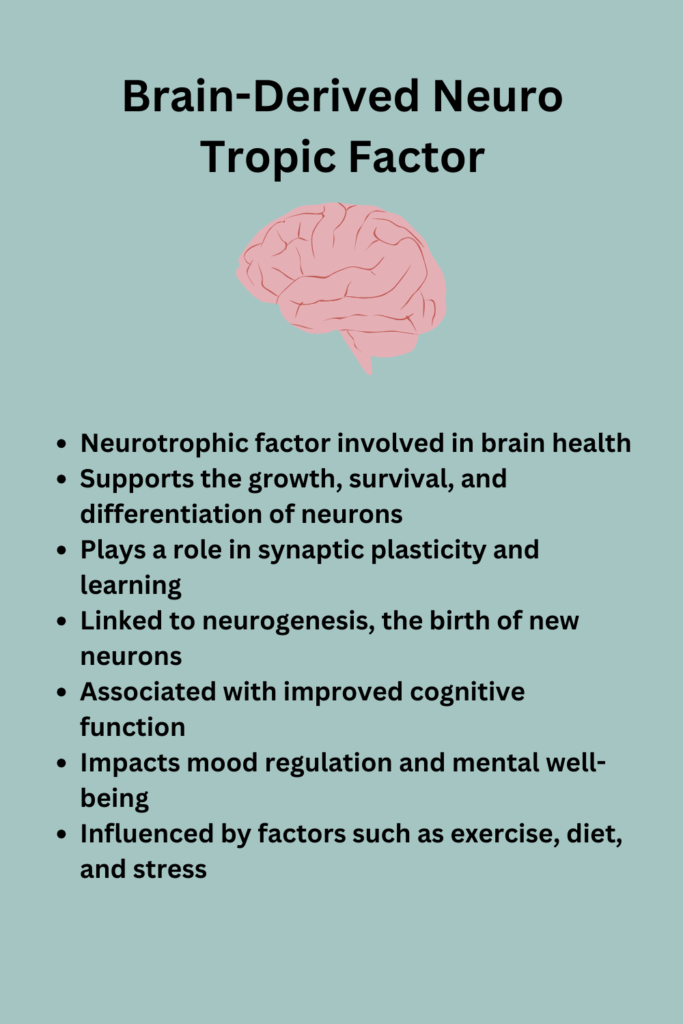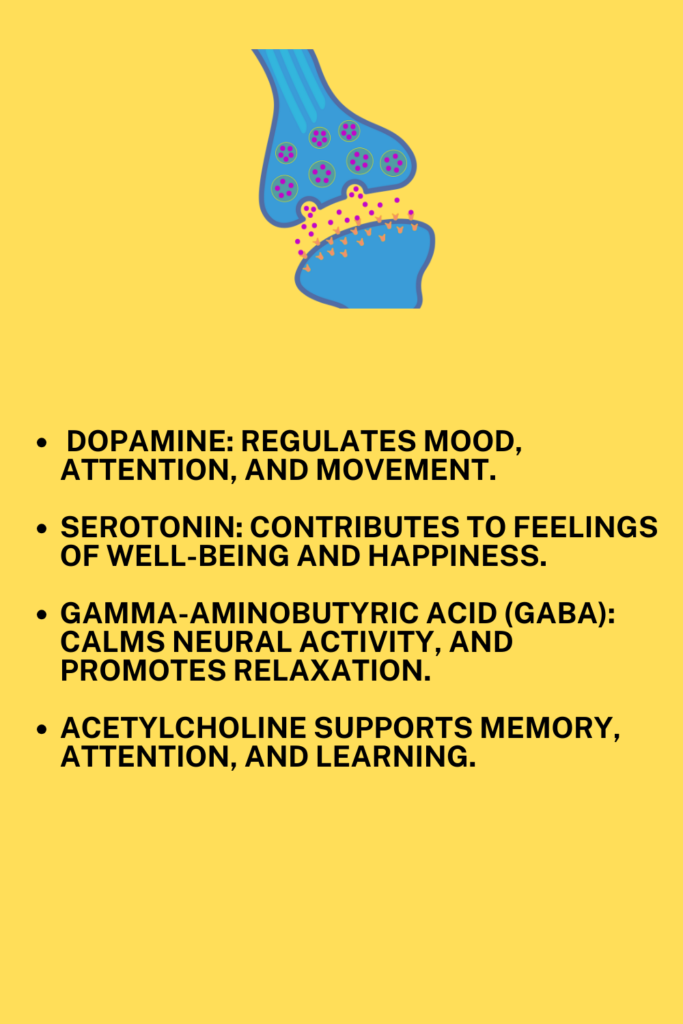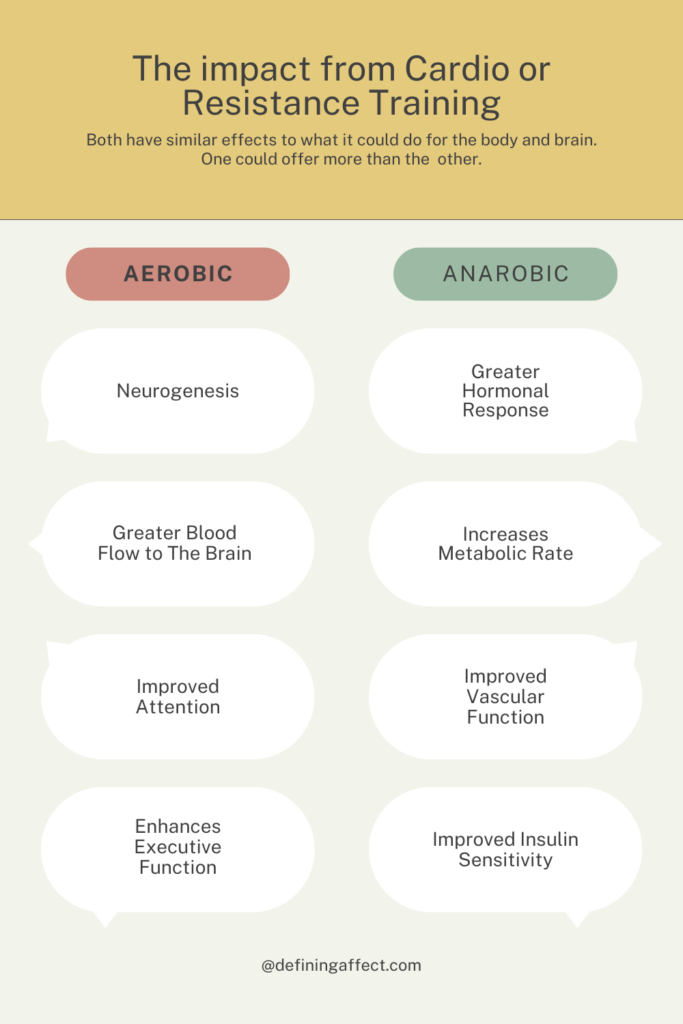The Cardio-Concentration Connection: Unleash Your Best Focus
Exercise has been long known to keep someone healthy and in shape. Exercise is not only for the body to be fit but it is also healthy for the brain. The type of exercise or the level of intensity the person is performing does not matter unless specific goals need to be met. Any form of movement is essential to the individual. Other than doing resistance training, what is sometimes overlooked is cardio.
There is no need to do long durations or cardio frequently. As mentioned, exercise is healthy for the brain and it can improve focus. This is important since some may have trouble doing knowledge work (studying or anything that depends on mental capacity). Short intense sessions can be beneficial for one to do periodically throughout the day.
Aerobic exercises are cardiovascular movements where the person’s heart rate increases. Running is not the only form of cardiovascular exercise a person can do. Activities like cycling, shadowboxing, swimming, or others could increase the heart rate. Even speed walking can also be considered as something as cardio. But for those who do not like to do long forms of cardio a short intense session has much benefit in comparison to a long one. The whole purpose is to boost vitality and cognitive performance.
As mentioned when the heart rate increases there is an increase in blood circulation. When blood begins to nourish the body and the brain. Especially in the brain, there is a protein called brain-derived neurotrophic factor (BDNF) that initiates. Its role is to help grow, develop, and maintain the neurons in the brain. BDNF has a wide range of benefits such as improving memory, mood regulation, has protective properties, and more. BDNF is one component that helps in concentration.

What Do Cardiovascular Exercises Do Specifically?
Cardiovascular exercises improve heart health, blood vessels, and overall health. Other than better blood circulation throughout the body it increases the metabolic rate. Since cardio exercises can use much of the body’s energy resources. It also enhances lung function and with this lung capacity expands and becomes more efficient. The main focus of aerobic exercises is that breathing and blood circulation are the main proponents of amplifying energy levels and concentration. Proper breathing is essential for generating energy during cardio workouts, while it’s crucial to note that the conversion of nutrients into energy requires an adequate intake of calories through consumed food
If you want to learn more check out How Breathing Provides Calmness and Energy
The heart is not the only organ that needs attention but the brain as well. Cerebrovascular relates to the blood flow in the brain’s blood vessels. There can be an occurrence of cerebrovascular disease which can result in blockage or a ruptured blood vessel. Hence lack of blood flow. Primary blood flow through the body and brain is important in many aspects. Blood is constantly flowing regardless of what the heart rate is. When it comes to cognitive health blood supply keeps it functioning well however, with less being circulated it leads to cognitive impairment like concentration, processing, and memory issues. As a person ages the quantity of vital fluids transportation decreases gradually. There are nutrients in the bloodstream (after consuming foods of course) and they nourish the body within.
Highlights of BDNF
Brain-derived neurotrophic factor is a contributor that keeps the brain from cognitive decline. It can keep a person focused and overall healthy. BDNF also helps in improving neural connectivity. This is vital because neurons are communicators that help bodily processing. As this enhances synaptic transmission BDNF supports brain plasticity which is responsible for rewiring the brain. BDNF can also influence other essential transmitters in the brain like dopamine, serotonin, GABA, and acetylcholine. These play a crucial role in learning, energy, calmness, awareness, and overall mind-body connection. These are the highlights of what brain-derived neurotrophic factors can do for someone. But it is important to remember everyone will have different levels of BDNF. Generally, those who are fit and healthy tend to have higher levels than those who are unhealthy or overweight.
Check out this post if you want to enhance your concentration!
There are many facets to maintaining or increasing the levels of BDNF naturally. It is quite simple to initialize BDNF and it is simply to live naturally or at least incorporate certain practices daily. Consume minimally processed foods that are nutritionally dense and macro-friendly. Being physically active daily whether it be a form of resistance or aerobic training. It also could be something as simple as walking. Exercise is the most effective approach to increasing the volume of BDNF. Lastly, some type of breathwork should be included this helps increase blood flow to the brain and provides a calming effect. Stress or inflammation negatively impacts the vessels which can lead to the narrowing of vessels. So this means slow movement of blood.

What’s More Effective Cardio or Weight Training?
Whether it’d be aerobic or anaerobic training (cardiovascular or resistance training) either is fine to do. Ideally, the purpose is to look to do something quick and intense. Simply, cardiovascular exercises are superior in this case. Since aerobic exercises are beneficial for the heart and lungs. This means there will be a demand for more oxygen as a person doing cardio training to the fullest. The heart pumps more blood to supply the body. This helps them get the oxygen they need to keep going during the exercise. This goes along with VO2 max, the maximum volume of oxygen the body uses during training. This in turn will improve blood circulation and stimulate nitric oxide. As a result, this process widens the blood vessels, facilitating a swifter flow of blood.
Anaerobic exercises, particularly resistance training, are notably effective in enhancing blood flow, potentially offering unique advantages over aerobic training in the long term (no pun intended). However, it’s crucial to note that excessive reliance on cardiovascular exercises can potentially contribute to elevated blood pressure, introducing stress on the heart and body. In resistance training, blood flow increases to supply oxygen to active muscles, and hard resistance training can elevate the metabolic rate, requiring more oxygen during and after the exercise session. As with any exercise regimen, a well-rounded and balanced approach is key to optimizing overall health and fitness.
Returning to the question. The goal is to enhance concentration before starting a productive session of any kind. Whatever needs attention or there must be a need to re-focus. Short intense aerobic exercise will do some wonders. It could be less than 15 minutes of cardio and oxygen and blood circulation will do the rest to keep one feeling engaged. Aerobic training provides a greater amount of blood flow to the brain. Especially the anterior cingulate cortex (medial wall of the brain) which is responsible for decision-making, cognition, and emotional attention. Aerobic training greatly influences the activation of BDNF which supports all-around brain function and synaptogenesis (The formation of fresh links between neurons in the brain, spinal cord, or connections between neurons and muscle cells.).

Doing both Strength and Cardio – Circuit Training
There is no problem doing both strength and cardio exercises. It even could be much more advantageous. It seems more like conditioning in all areas of fitness. These sessions also do not have to be long either since there is no need for long breaks in between. Some may not be aware but when strictly strength training in the gym or at home. The purpose is to gain muscular strength but after each quality set the individual needs to rest at least 2 to 4 minutes before starting their next set. But circuit training encourages minimal rest in between rounds.
Circuit training is a form of workout that combines a series of exercises targeting different muscle groups, often arranged in a circuit or sequence. Participants complete a round of exercises and each round can consist of 3 to 5 different exercises. Once completed the person takes a brief rest and does another round. A typical circuit may include strength training exercises, cardiovascular activities, or a mix of both. The goal is to provide a comprehensive and time-efficient workout that enhances overall fitness, endurance, strength, and sometimes flexibility. Circuit training is adaptable, making it suitable for various fitness levels, and it can be customized to focus on specific fitness goals, such as weight loss, muscle toning, or cardiovascular improvement.
Do keep in mind with circuit training the participant does not use heavy weights or advanced variations of exercises. This is not ideal since it severely impacts the nervous system making the person fatigued. With that, the person will have difficulty in fulfilling the circuit training sessions.
Here is a sample for better understanding:
Round 1:
- Bodyweight Squats: 30 seconds
- Push-Ups: 30 seconds
- Dumbbell Lunges: 30 seconds (15 seconds per leg)
- Bent-Over Dumbbell Rows: 30 seconds
- Plank: 30 seconds
Rest: 1 minute (adjust based on your fitness level and intensity)
Round 2:
- Mountain Climbers: 30 seconds
- Dumbbell Shoulder Press: 30 seconds
- Jumping Jacks: 30 seconds
Rest: 1 minutes
Round 3:
Another set of exercises
Rest: 1 minutes
Wrap up
In conclusion, BDNF is key to promoting cognitive function at its fullest. BDNF is a contributor to neuroplasticity which is the rewiring of the brain. There are many ways to initialize this neurotrophin and the most effective method is through physical movement. Although anaerobic training is far superior in pumping blood in localized areas of the body. But for something needing a quick boost of energy or to reiterate focus, aerobic exercise will do the job. Circuit training can also be helpful if the individual is interested in doing it. It is a mixture of strength, cardio, and mobility that can also augment the mind-body connection. It may even have a positive effect given the idea both strength and cardiovascular movements combined provide similar and their own benefit to the brain and body. Such as increased brain volume, spatial memory, white/grey matter, and others.
If you found this post helpful, please share and subscribe.
Sources:
Benefits of exercise training on cerebrovascular and cognitive function in ageing
The Role of Brain-Derived Neurotrophic Factor (BDNF) in Diagnosis and Treatment of Epilepsy, Depression, Schizophrenia, Anorexia Nervosa and Alzheimer’s Disease as Highly Drug-Resistant Diseases: A Narrative Review






